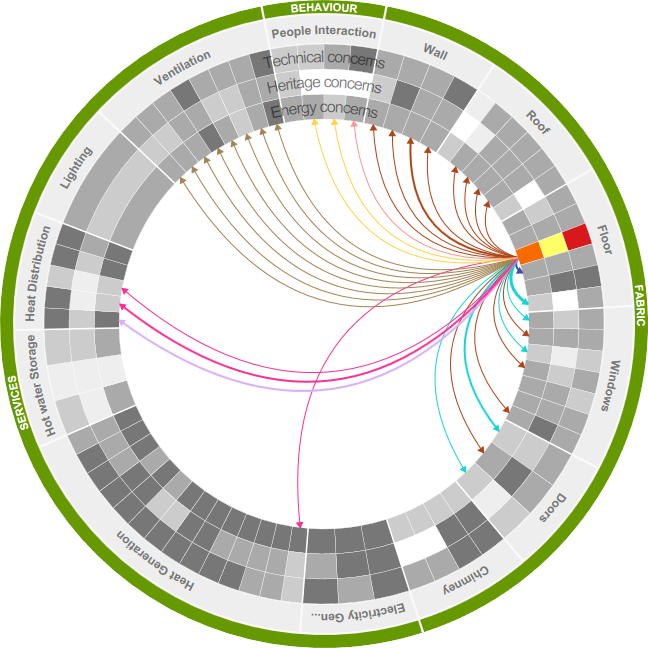Reference: Ranking of interventions to reduce dwelling overheating during heat waves (2012) Porritt, S.M.; Cropper, P.C.; Shao, L. and Goodier, C.I.
Original document location: Click here
Abstract or summary
Extreme weather events, including heat waves, are predicted to increase in both frequency and severity over the coming decades. Low house building rates and a growing population mean there is a need to adapt existing dwellings. Research presented here uses dynamic thermal simulation to model the effect of passive heat wave mitigating interventions for UK dwellings. Interventions include a range of additions and modifications to solar shading, insulation and ventilation.
Results are presented for typical end and mid terrace houses, with four orientations, two occupancy profiles and using weather data from the 2003 heat wave. Results show the effectiveness of interventions that reduce solar gains through the building fabric, such as external wall insulation and solar reflective coatings. Internal wall insulation is shown to be less effective and can increase the overheating problem in some cases. Control of solar gains through glazing, using shutters and fixed shading, are also effective, particularly for south, east and west-facing rooms.
Results are also presented which demonstrate how it is possible to select combinations of interventions that both eliminate overheating and reduce space heating energy use. The cost of interventions is also considered in the final analysis.



